Part of a series of articles titled Park Paleontology News - Vol. 14, No. 2, Fall 2022.
Article
Paleontology of Katahdin Woods and Waters National Monument

Justin Tweet, NPS Partner—Paleontologist
American Geosciences Institute
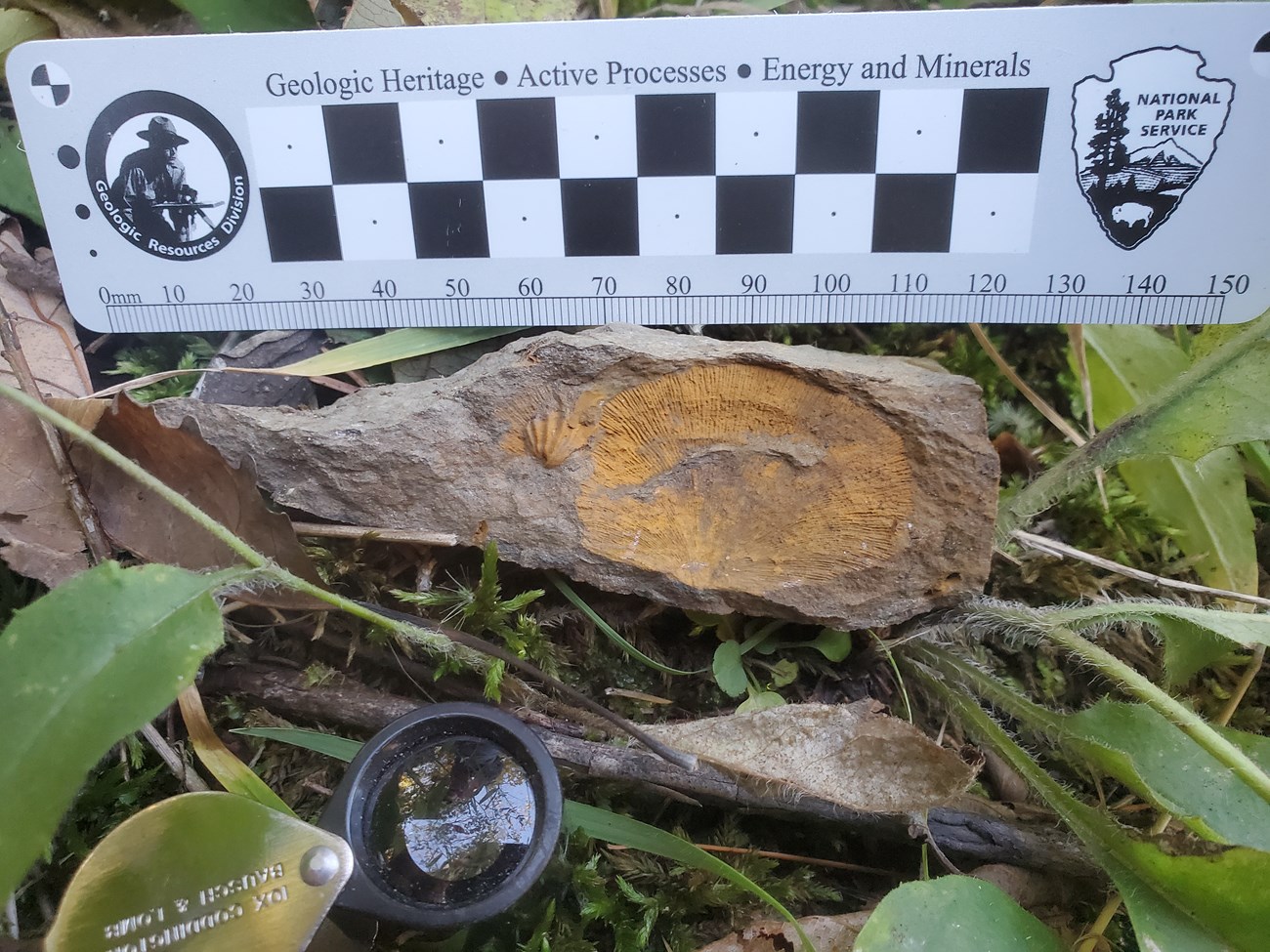
NPS photo by Vincent Santucci.
Introduction
Katahdin Woods and Waters National Monument (NM) is one of the newest national monuments, having been established in 2016. It encompasses 35,435 hectares (87,563 acres) in Penobscot County, north-central Maine. Katahdin Woods and Waters NM hosts a forested landscape of Paleozoic mountains and much younger Ice Age glacial features, linked by the East Branch of the Penobscot river system (hereafter East Branch). On the west of the monument is Baxter State Park, which hosts Mount Katahdin (a U.S. National Natural Landmark). One of the resources mentioned in the presidential proclamation establishing the monument is fossils, making Katahdin Woods and Waters NM one of only 18 National Park System units that have paleontological resources specifically referenced in their establishing proclamation or enabling legislation. With the cooperation of monument staff and area geologists, the paleontology program of the NPS’s Geologic Resources Division made the first paleontological resource inventory of the monument in 2021. A public version of the final report is in progress.
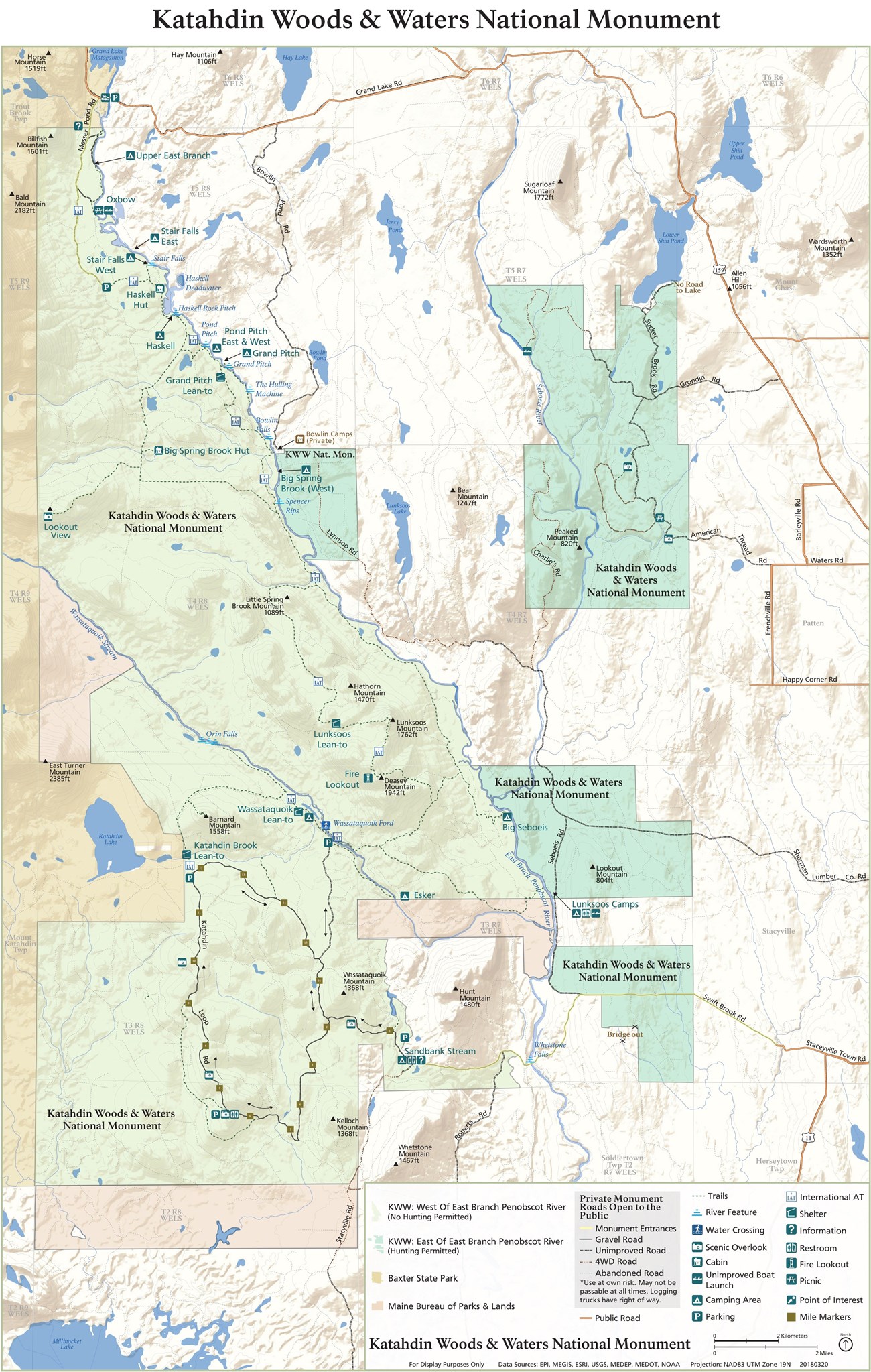
NPS map.
Geologic History and Setting
Katahdin Woods and Waters NM is located in a geologically complex area, with numerous folds and faults. Making things more complicated, bedrock is usually covered by thick glacial deposits as well as dense forests. These challenges make places that have exposures of geologic strata, such as the monument, important for understanding the geological history of central Maine. The rocks of Katahdin Woods and Waters NM document much of the first half of the Paleozoic Era, approximately 540 to 400 million years ago.
Hundreds of millions of years ago, this part of North America looked very different. The lands east of today’s Appalachian Mountains have geologic foundations that came from elsewhere: “slivers” that broke from other continents, or chains of volcanic islands. For much of the Paleozoic, fragments of crust were transported to North America by the movement of tectonic plates, until the process ended with the collision of the other continents to form the supercontinent Pangaea about 335 million years ago. Each newly incorporated fragment would affect the area it collided with and would in turn be affected by later collisions. Careful study using features such as fossils can shed light on this history.
The oldest known fossils documented within the monument come from the Cambrian Grand Pitch Formation. These are invertebrate burrows known as Oldhamia, which look something like a sketch of a palm leaf or exploding firework. The rocks were part of a continental fragment that did not reach North America until tens of millions of years later. As the fragment drew closer to North America during the following Ordovician Period (ending about 443 million years ago), a sequence of marine volcanic rocks and sedimentary rocks was deposited that can now be seen between Pond Pitch and Haskell Rock Pitch on the East Branch. Resistant beds form the series of waterfalls and rapids in this area. Locally, they contain fossils of corals, brachiopods (“lamp shells”), and other animals.
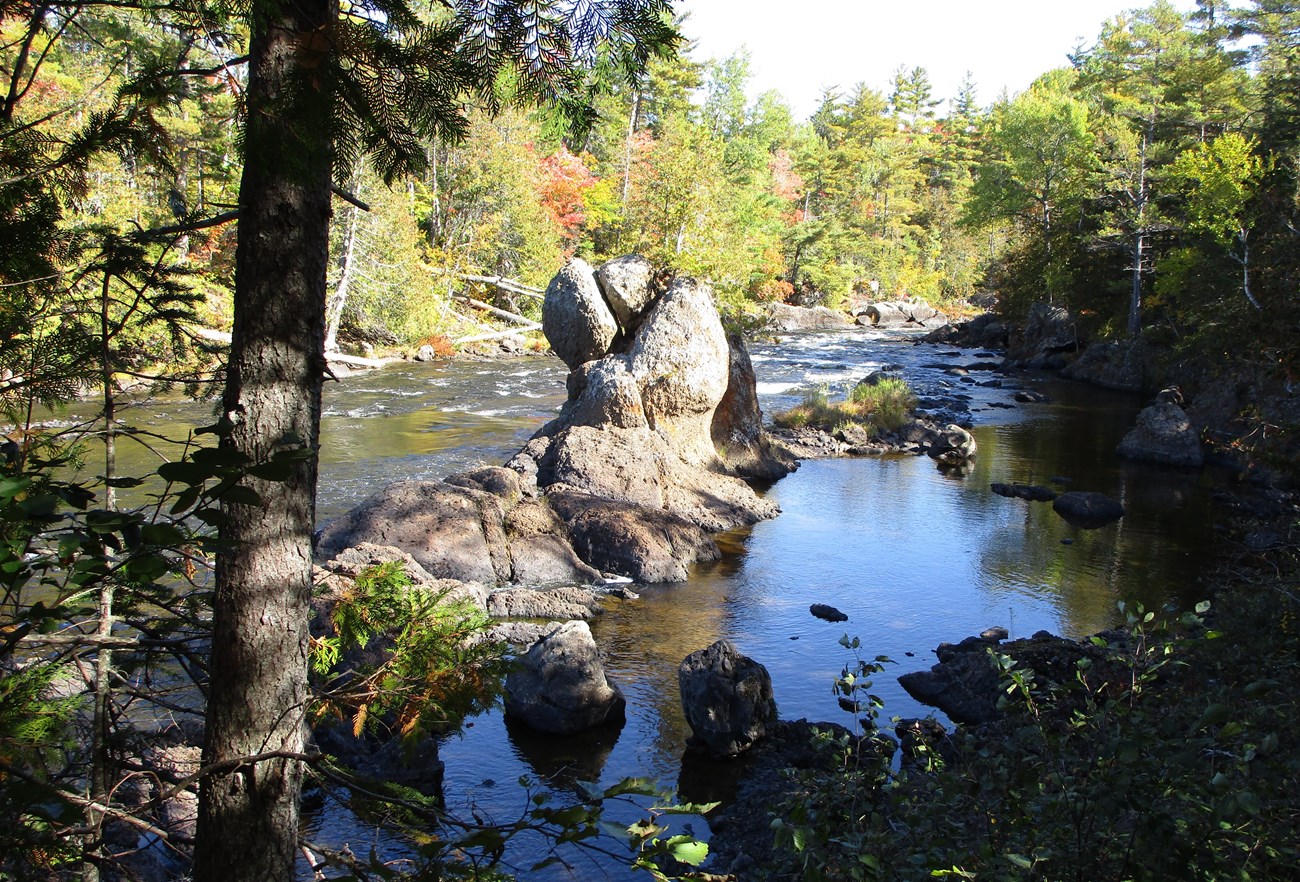
NPS photo by Justin Tweet.
More sedimentary and igneous rocks follow in the Silurian, approximately 443 to 419 million years ago. Fossils are uncommon in most of the sedimentary rocks. A significant exception is the informally named “Owen Brook Limestone”, an isolated area of late Silurian limestone found deep in the monument’s forests. The limestone has been recrystallized, which affects the quality of fossil preservation, but sponges, corals, brachiopods, and crinoids (“sea lilies”) can be recognized. It might represent an ancient reef.
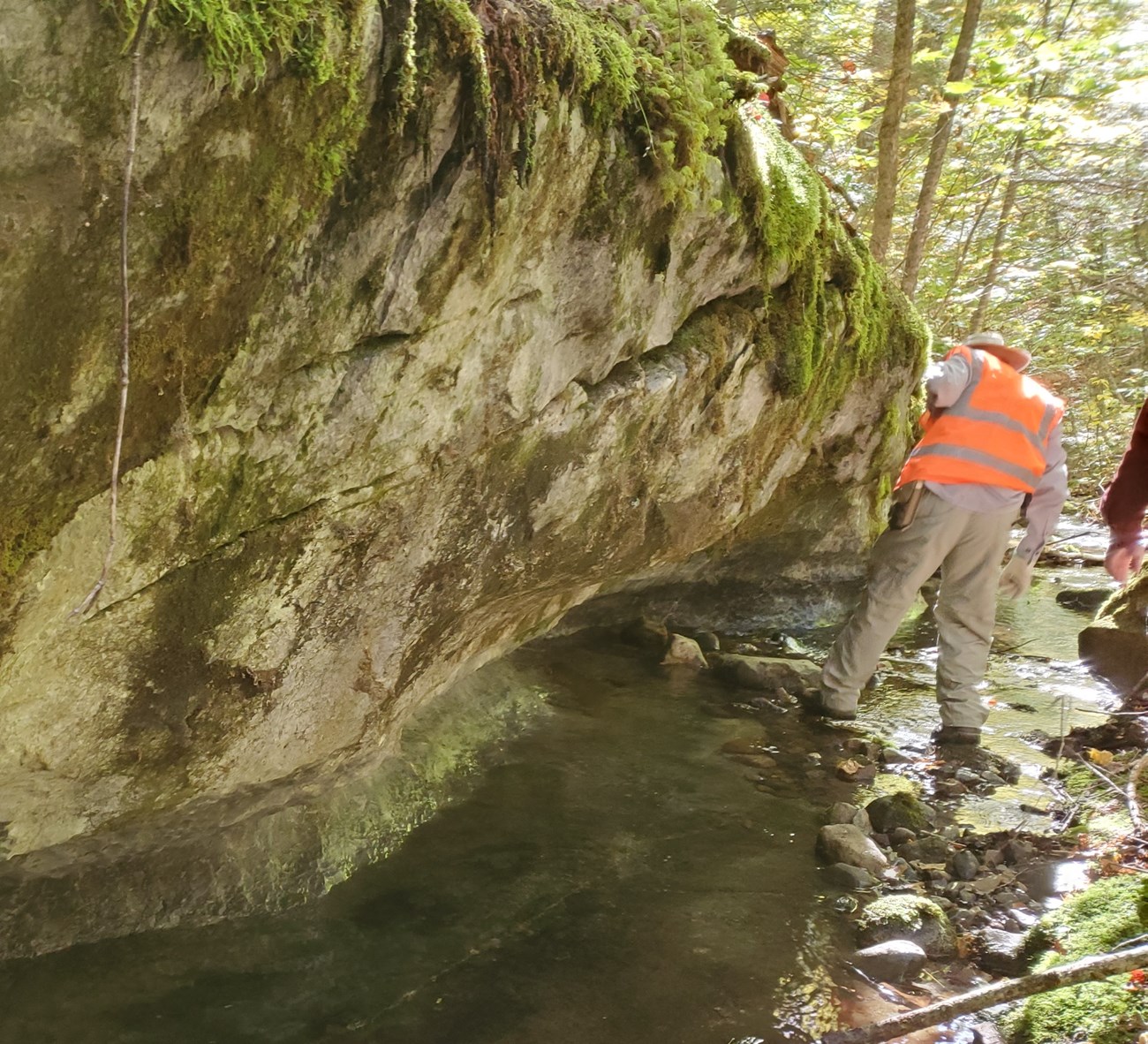
NPS photo by Vincent Santucci.
Following the Silurian, a delta system grew into the marine setting, represented by the Seboomook Group and overlying Matagamon Sandstone. The Seboomook Group is not known to be fossiliferous in the monument, but the Matagamon Sandstone has yielded a variety of fossils including brachiopods, trilobites, and crinoids. Deposition of the delta system was interrupted by volcanic activity that occurred approximately 407 million years ago. Nearby Mount Katahdin is actually part of the crystallized magma chamber of a Devonian supervolcano. There are no younger rocks preserved at the monument, and in general rocks younger than the Early Devonian (ending approximately 394 million years ago) are rare in Maine. This is because of erosion and non-deposition. One of the major sources of erosion was glaciers, which advanced and retreated many times between approximately 2.58 million years ago and 12,000 years ago. Glaciers scraped up rocks and loose deposits and dumped them elsewhere.
Fossil Resources of Katahdin Woods and Waters
Many kinds of fossils have been reported from Katahdin Woods and Waters NM. They are either body fossils or trace fossils of marine invertebrates. Most of the diversity comes from corals and brachiopods. In terms of abundance, crinoid columnals (pieces of the “stems” of sea lilies) are frequently found, but columnals are hard to attribute to species so we know very little about the actual kinds of crinoids that they came from. Other kinds of fossils found in the monument include sponges, bivalves, snails, trilobites, graptolites (a kind of colonial invertebrate, with tiny worm-like animals living in tubes or cups in larger structures), and invertebrate burrows.

NPS photo by Justin Tweet.
There are many published references to fossils from the monument, but in most cases these are only in passing, made in support of other geologic work. The 2021 field paleontological inventory was the first time that fossils were the primary focus of a study in the monument, and the first time they have been comprehensively documented. Geologists began documenting the area that includes the monument in the early middle 19th century. The first report of fossils from what is now the monument may be a reference to corals on Peaked Mountain published in 1838. Charles Hitchcock, the State Geologist of Maine in 1861–1862, led an expedition to the area in August 1861 that resulted in several publications and reports of fossils. Unfortunately, the collections from the expedition are thought to have been destroyed in a fire at the Portland Society of Natural History in 1866. Most of what we know about the paleontology and geology of the monument comes from geologic mapping by Robert Neuman and Douglas Rankin in the 1950s and 1960s. Four fossil species have been named from fossils discovered in what is now the monument, and two others may have but have vague locality information.
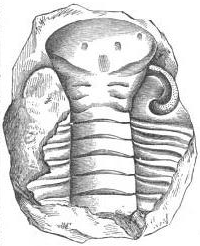
Illustration (right): This illustration shows a partial trilobite fossil possibly collected from within the modern boundaries of Katahdin Woods and Waters National Monument. It was named Dalmanites epicrates in 1869.
Figure 21 in plate from Billings, E. 1869. Description of some new species of fossils with remarks on others already known, from the Silurian and Devonian rocks of Maine. Proceedings of the Portland Society of Natural History 1(2):104–126.
The fossils of Katahdin Woods and Waters NM help to provide a more complete picture of the geologic history of this area where many questions remain to be answered, and are part of our national paleontological heritage. If you should see a fossil while visiting the monument, feel free to take photos, but remember to not remove or disturb it; share your find with a Park Ranger instead.
Related Links
-
Katahdin Woods and Waters National Monument, Maine—[Geodiversity Atlas] [Park Home] [npshistory.com]
Last updated: September 27, 2022
